
Cocopalms is an innovative e-commerce platform designed to seamlessly integrate product and service offerings, providing users with a comprehensive shopping and service experience. The platform encompasses a main website, a customer-facing mobile app, a store management app, and a delivery app with real-time tracking capabilities.
Role: As the lead UI/UX Designer and UX Researcher, I was responsible for the end-to-end design process, including user research, interface design, branding, and collaboration with development teams.
Tools: Figma, Google Analytics, Hotjar
Role: As the lead UI/UX Designer and UX Researcher, I was responsible for the end-to-end design process, including user research, interface design, branding, and collaboration with development teams.
Tools: Figma, Google Analytics, Hotjar
Challenges
The project presented several challenges that required strategic planning and execution.
Goals
- Seamless integration:
Develop a platform that combines product sales and service bookings in a unified user experience. - Scalability:
Design with scalability in mind to accommodate future features and expansions. - User-centric design:
Ensure the platform is intuitive and meets the diverse needs of customers, store managers, and delivery agents.
Methodologies
Competitive analysis:
Evaluated leading e-commerce and service platforms to identify strengths, weaknesses, and opportunities.
User surveys and interviews:
Gathered qualitative and quantitative data to understand user expectations and pain points.
Usability testing:
Conducted iterative testing to refine design elements and improve user experience.
Evaluated leading e-commerce and service platforms to identify strengths, weaknesses, and opportunities.
User surveys and interviews:
Gathered qualitative and quantitative data to understand user expectations and pain points.
Usability testing:
Conducted iterative testing to refine design elements and improve user experience.
UX Research and Insights
Understanding the Requirements
During our requirements discussion, we agreed to design with scalability in mind to accommodate future features and updates. The complex nature of Cocopalms, which encompassed both e-commerce and service-based interactions, required special attention to ensure service providers could modify offerings seamlessly. The initial research highlighted that the target audience, already familiar with various shopping apps, had specific expectations centered on simplicity and efficiency.
Competitive Analysis
The competitive analysis focused on understanding industry standards and identifying gaps that Cocopalms could fill.
Evaluation criteria
- User experience (UX):
Navigation, responsiveness, and ease of use. - Visual design:
Brand consistency, imagery, and overall aesthetics. - Features and functionality:
Integration of product and service offerings, reservation systems, and user accounts. - SEO strategies:
Keyword optimization, meta tags, and page load speeds. - Performance:
Site speed, uptime, and mobile responsiveness.
User Surveys and Interviews
To align the platform with user needs, I conducted user surveys and interviews.
Process
- Surveys:
Distributed online questionnaires targeting potential users to gather broad insights. - Interviews:
Conducted in-depth discussions with a select group to delve deeper into user behaviors and expectations.
Target audience
- Age group: 25–45 years
- Tech-Savvy individuals: Regular users of online shopping and service platforms.
- Professionals seeking convenience: Individuals looking for integrated solutions for products and services.
Impact on the design
- Integrated offerings:
Designed features that allow users to purchase products and book services seamlessly. - Mobile-First approach:
Ensured the platform is fully responsive and optimized for mobile devices. - Streamlined navigation:
Simplified menus and pathways to enhance user experience.
UX Design Process
Product Goals
Based on research after gathering key insights from user survey and competitive analysis, I outlined the website goals.

Information Architecture
After analyzing the user needs and understanding the business goals, I designed an intuitive navigation structure that seamlessly integrates shopping and service booking.
Key elements
- Persistent search bar for easy product and service discovery.
- Separate but connected Shop and Services sections.
- Smart filters and categories for effortless browsing.
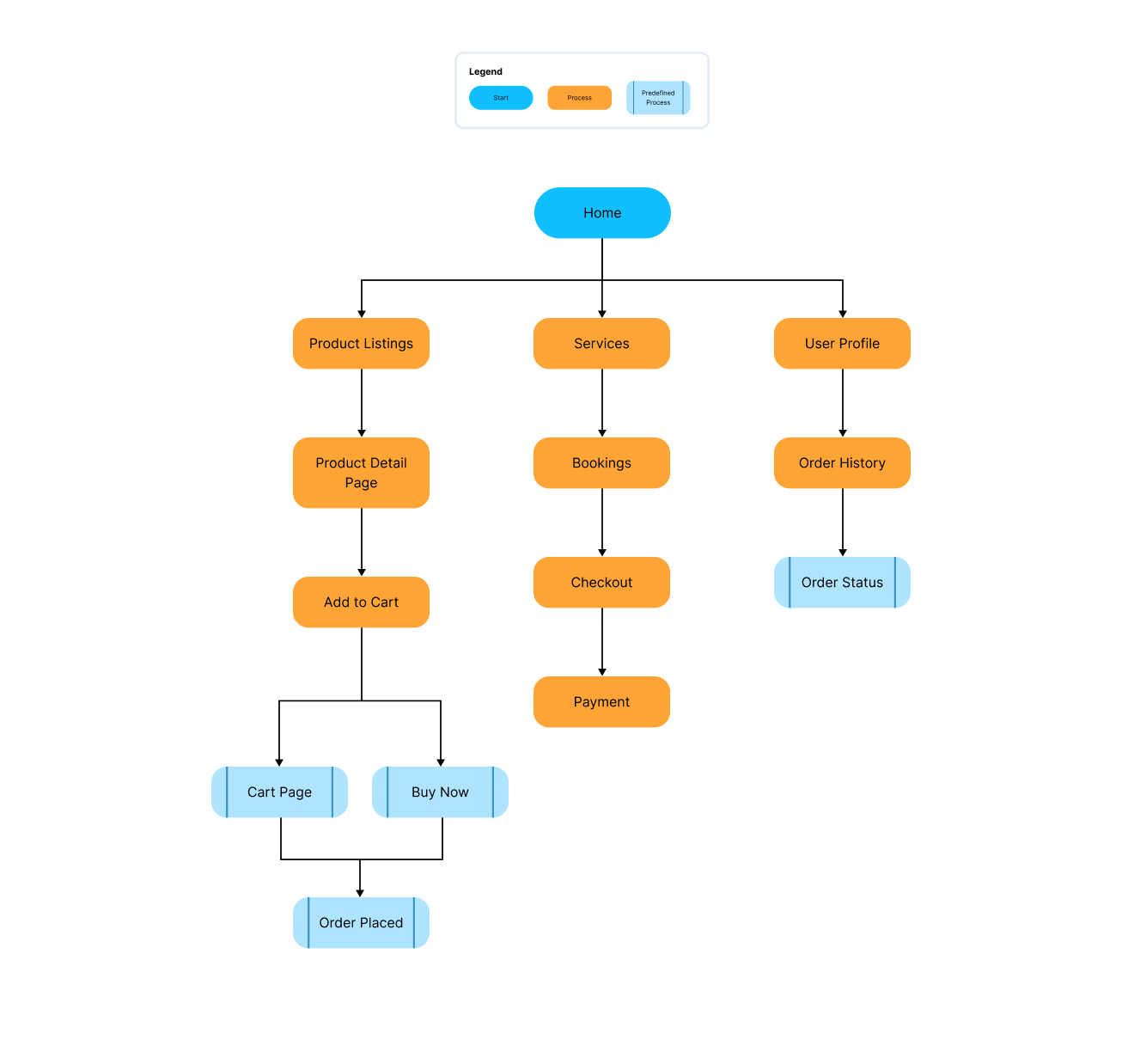
Sitemap
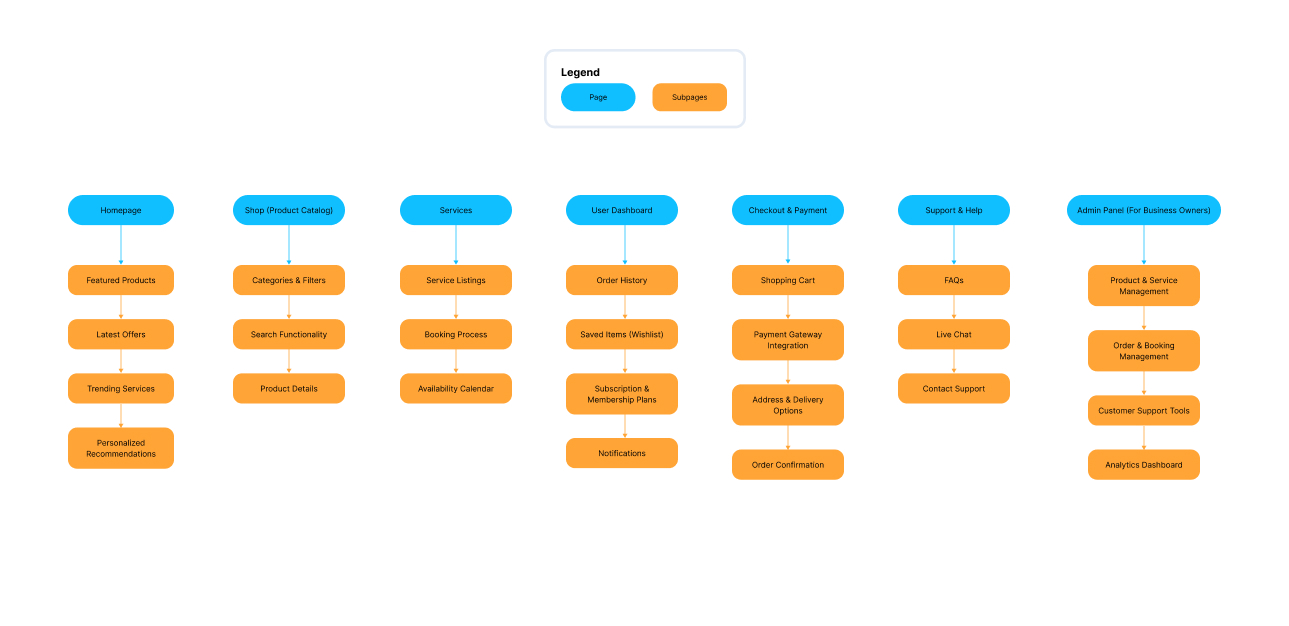
Idea & Wireframes
Wireframes
I created initial sketches focusing on simplified product and service discovery and Dynamic homepage with personalized recommendations.
This also included a smooth onboarding experience along with one-click add-to-cart & easy service scheduling.
I created initial sketches focusing on simplified product and service discovery and Dynamic homepage with personalized recommendations.
This also included a smooth onboarding experience along with one-click add-to-cart & easy service scheduling.

UI Design
Design principles
The visual design phase brought the wireframes to life. To make sure the design is on brand, I emphasized on clarity, consistency, and responsiveness.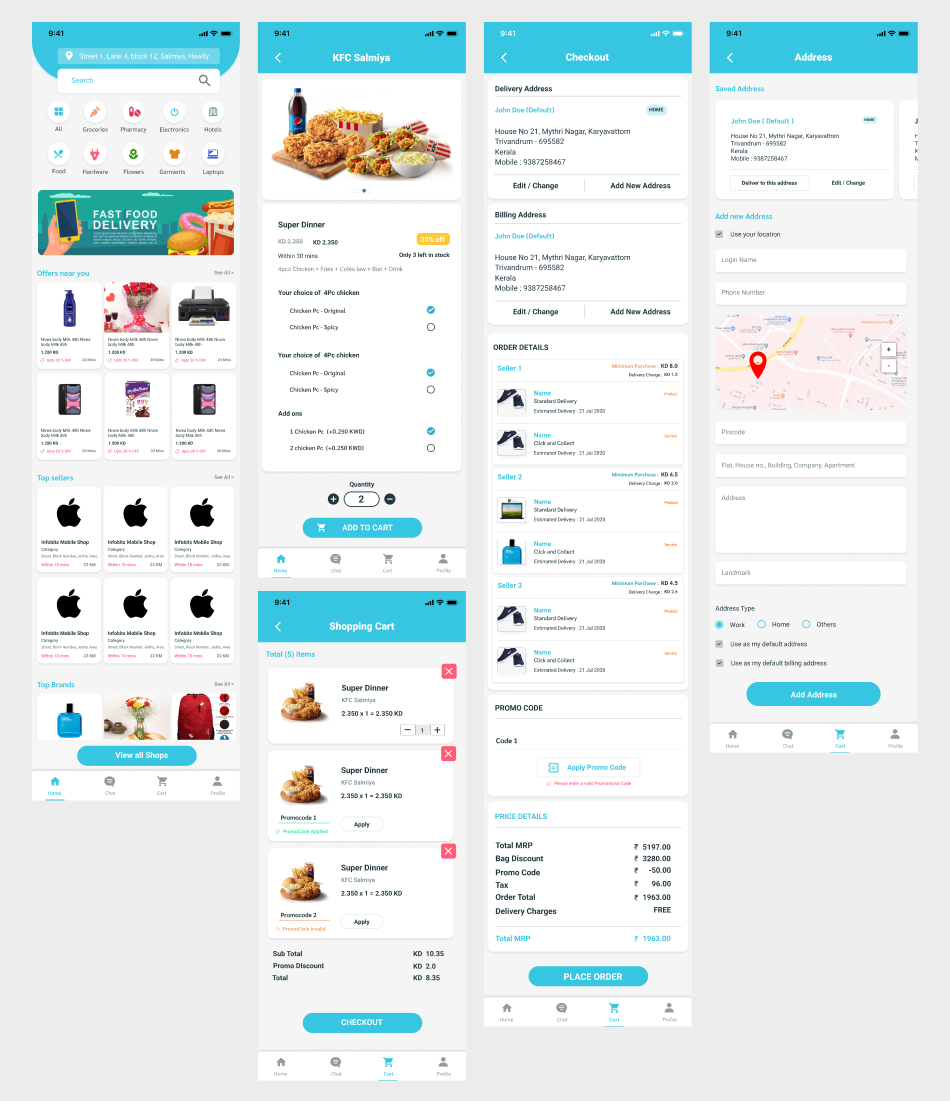
The visual design phase brought the wireframes to life. To make sure the design is on brand, I emphasized on clarity, consistency, and responsiveness.
- Color scheme: Adopted a palette that reflects the brand’s identity.
- Typography: Selected fonts that enhance readability and align with the brand’s tone.

Development & Testing
1. Development Approach
We followed an Agile methodology, incorporating iterative testing and feedback loops to ensure continuous improvement.
Real-time updates were implemented, enabling live tracking for deliveries and instant booking confirmations.
To enhance SEO and performance, best practices were applied to improve search visibility and reduce page load times.
Real-time updates were implemented, enabling live tracking for deliveries and instant booking confirmations.
To enhance SEO and performance, best practices were applied to improve search visibility and reduce page load times.
2. Implementation and User Testing
To ensure a smooth and effective user experience, we conducted multiple rounds of usability testing throughout the design and development process.
- Prototype testing
We started by testing an early version of the design, allowing users to interact with the interface and identify any usability challenges. - A/B testing
Different UI variations were tested to determine which design elements improved engagement and conversions. - Live beta testing
A limited audience was given access to a beta version to gather real-world feedback before the full launch.
3. Feedback and Improvement
Feedback: Users found the integrated product & service booking confusing initially.
Solution: Added a clear distinction in the UI with visual hierarchy enhancements.
..................Enhanced service booking flow to be intuitive and fast.
Solution: Added a clear distinction in the UI with visual hierarchy enhancements.
..................Enhanced service booking flow to be intuitive and fast.
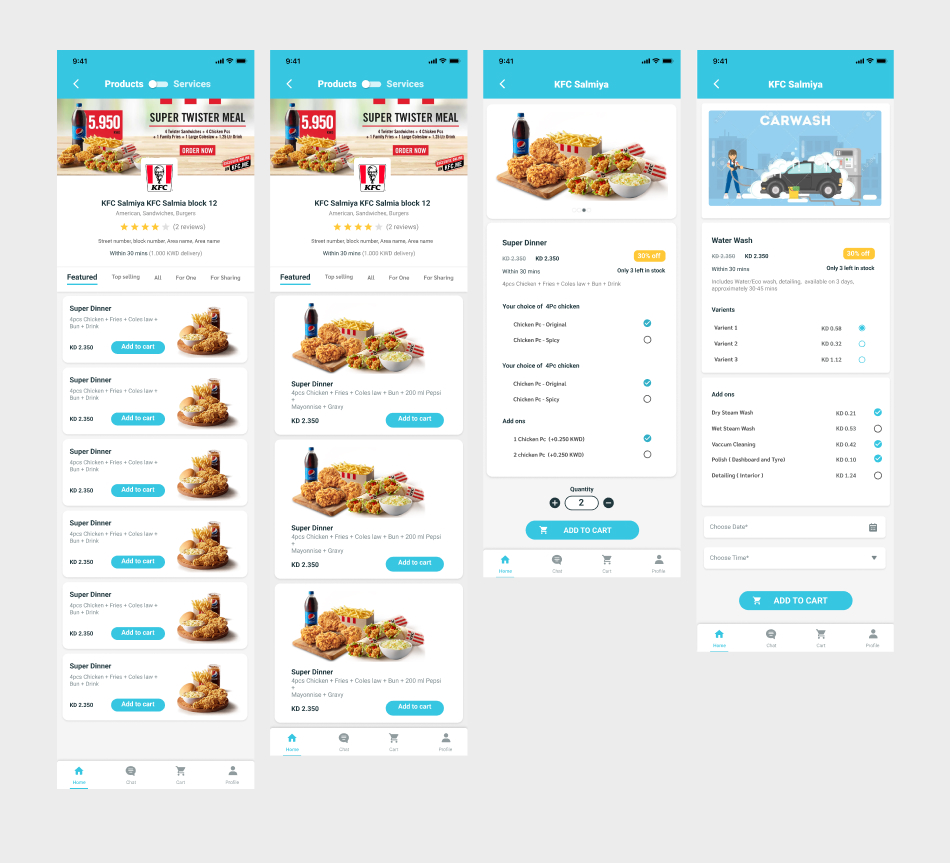
Feedback: Checkout flow needed a progress indicator.
Solution: Introduced a step-based progress bar in checkout thus improving checkout process for a .................seamless experience.
Solution: Introduced a step-based progress bar in checkout thus improving checkout process for a .................seamless experience.
4. Store and Admin Pages
Designed for store owners, this interface allows seamless management of product listings, pricing, order processing, and service customization. Real-time updates ensure accurate stock levels and availability.

The admin panel provides centralized control over products, services, users, and orders. It includes intuitive tools for managing inventory, tracking sales, monitoring user activity, and ensuring a smooth operational workflow.
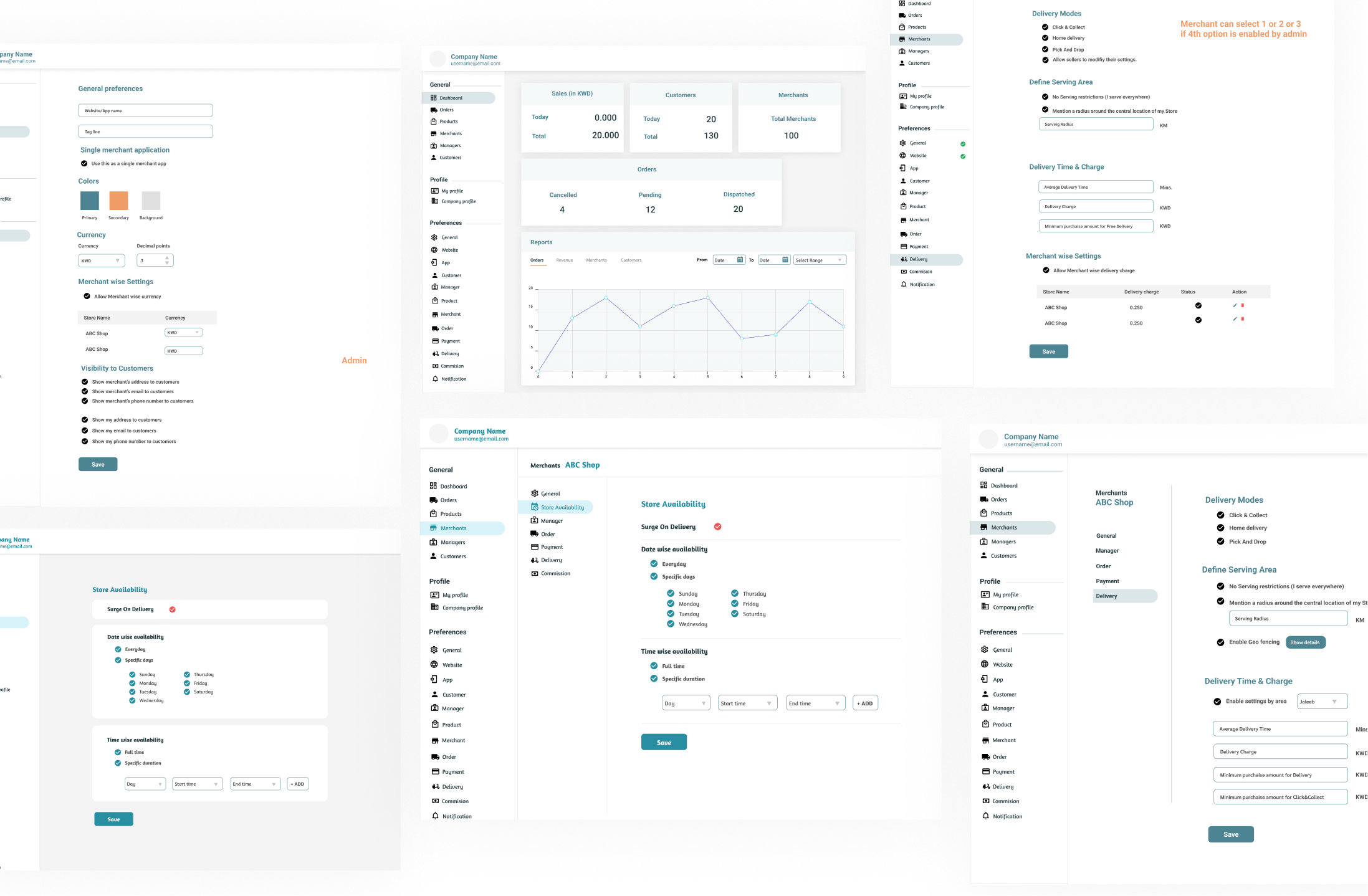
This module streamlines delivery operations by offering driver assignment, real-time tracking, and route optimization. Admins can monitor driver performance, manage schedules, and ensure efficient order fulfillment.
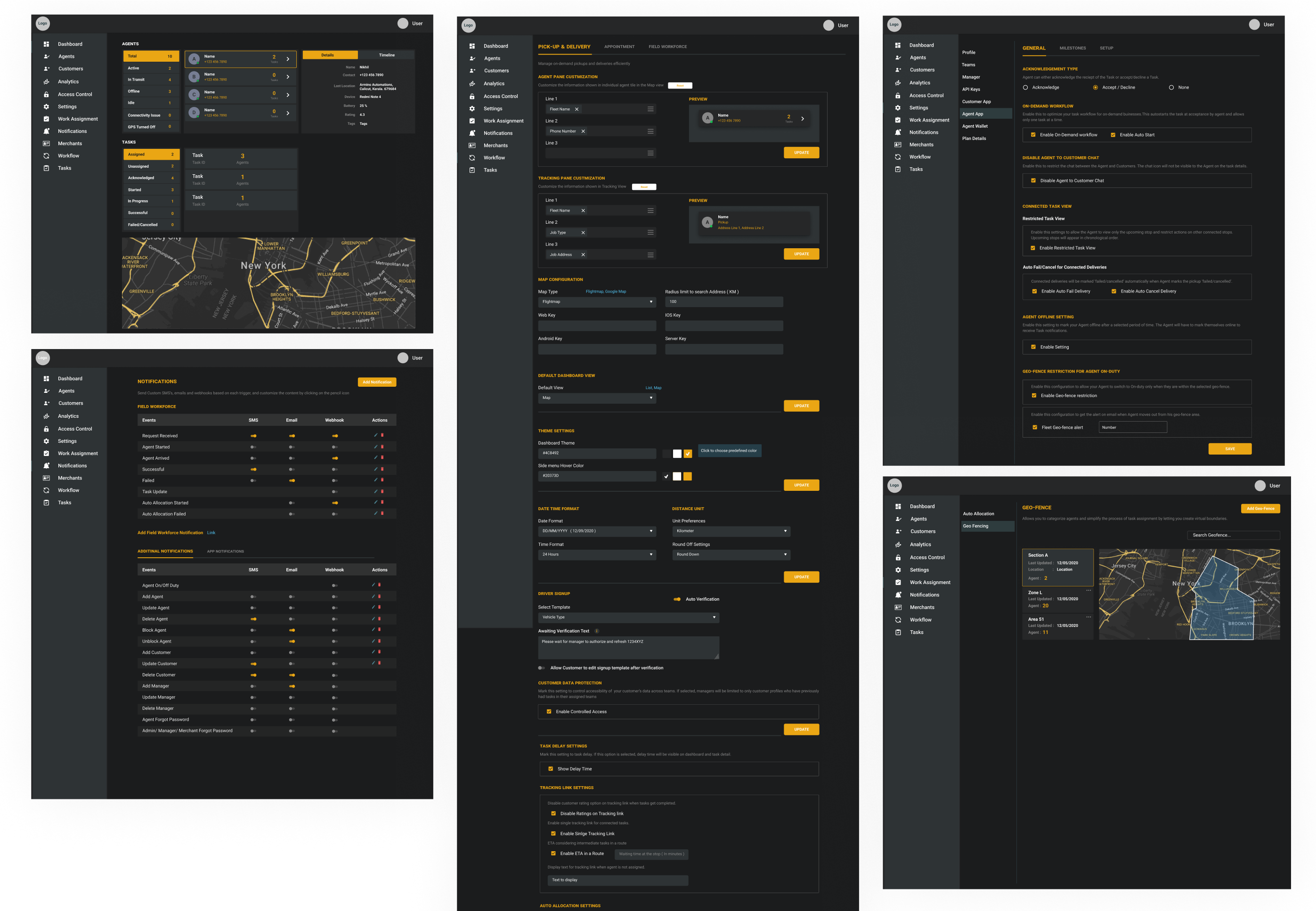
Outcome
Cocopalms saw a 35% increase in purchases due to an intuitive design and seamless shopping experience.
The mobile-first approach proved effective, with 70% of traffic coming from mobile users.
The mobile-first approach proved effective, with 70% of traffic coming from mobile users.
The UX process for Cocopalms focused on seamless user experience, personalization, and flexibility, resulting in a highly intuitive e-commerce and service booking platform.
By leveraging data-driven insights, usability testing, and iterative design, we successfully created a customer-centric solution that bridges the gap between shopping and service scheduling.
By leveraging data-driven insights, usability testing, and iterative design, we successfully created a customer-centric solution that bridges the gap between shopping and service scheduling.